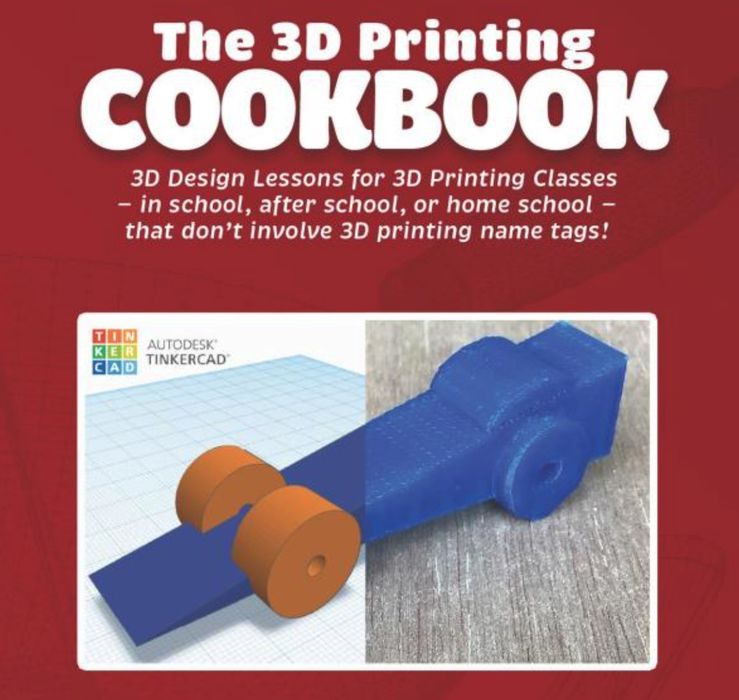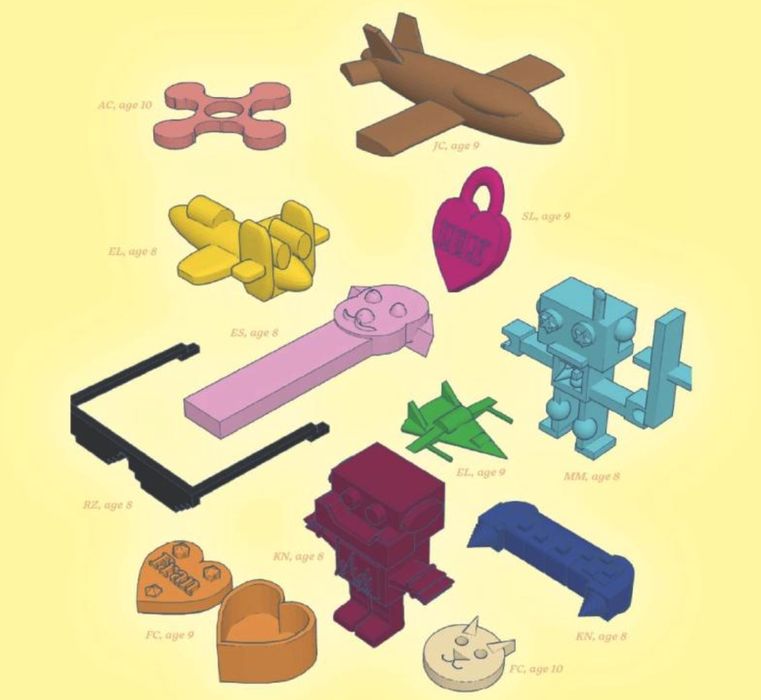
This week’s selection is “The 3D Printing Cookbook: Tinkercad Edition” by David Seto.
This paperback book targets the educational market, specifically those involved — or who want to be involved — in 3D printing.
Specifically, the book is intended for new STEM teachers, homeschool parents and others who need to teach the practice of 3D printing for early-grade students. It’s laid out in “cookbook” form, which is an easy-to-follow format for both teachers and students.
The book begins by establishing the setup and configuration for 3D printing within a classroom. While this may seem to be obvious, it’s not quite as clear when you realize the machine must co-exist with other teaching activities, and at the same time provide good access for students.
3D printing involves more than just the printer itself. There are materials to be selected and acquired, tools and most importantly, software.
Software is actually the key element of this book.
You might have thought this book to be familiar, and that’s because we’ve previously featured a similar book entitled, “The 3D Printing Cookbook: Fusion 360 Edition”. The difference here is that this is the Tinkercad edition.
Tinkercad is a very popular and easy-to-use online 3D design tool from Autodesk. Almost anyone can quickly learn the tool, but even so it is still quite powerful. I know of several folks who routinely use Tinkercad for professional work, if you can believe it.
The simplicity of Tinkercad makes it ideal for use with students in early grades.
The book provides all the steps required to setup and configure the 3D printer and the software, ready for use. There’s even a syllabus for educators to use for organizing a 3D printing course.

The major portion of the book is dedicated to sample projects. Projects include:
- Navigation
- Table
- Ring
- Building
- Cup
- Heart-shaped Box
- Toy Phone
- Chocolate Bar
- Robot Finger Tip
- Rocket
- Car
- Wand
Each project contains all the information required for students to actually produce the object, including walk-throughs of design operations in Tinkercad. That’s the key value of the book; showing students how to create their own objects through projects.
Once students make their way through the syllabus, they should not only understand the basic concepts of digital manufacturing, but they may also go on to make parts for their own projects.
Teachers in early grades should consider using this book as a guide for their 3D printing activities.
We’re an Amazon Associate and earn a small fee from qualifying purchases. Help support our 3D print news service by checking out this book!
Via Amazon
